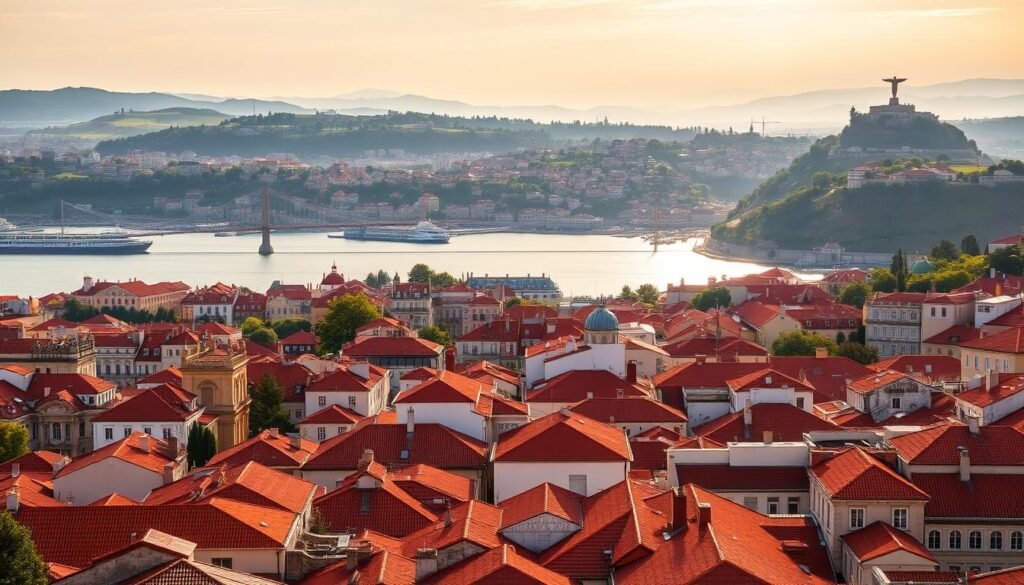Surprising fact: more than 8 million travelers choose this major European city for short breaks every year, and I quickly learned why.
I write this as a friendly, first-person guide to the top activities that helped me click with the place. I loved riverfront squares, soulful nights, and steep streets that reward you with unforgettable views.
Spring and early fall were my sweet spots. Lines were shorter and the weather let me linger over food and history without rushing.
The city rebuilt after the 1755 quake with broad avenues and grand squares, yet the hills add charm and extra steps. I factor in time between stops and plan routes by neighborhood so I can climb one hill at a time.
How I get around: I buy a 24-hour transport pass and hop trams, funiculars, the Santa Justa Lift, and even a ferry. That pass stitched my trip together and saved time.
Key Takeaways
- Visit in shoulder seasons for fewer crowds and nicer weather.
- Use a 24-hour transport pass to connect trams, lifts, and ferries.
- Plan neighborhoods by hill to save energy and catch sunsets.
- Pair sights with nearby bites like pastéis and seafood.
- This practical guide offers timing tips, routes, and skip-the-line advice.
My essential game plan for a first trip to the city
My game plan starts with grouping nearby sights into gentle loops that save steps and time.
This guide sets out how I pack must-see places, meals, and neighborhoods into easy, low-stress days.
I aim for three days as a sweet spot. One day covers central squares and viewpoints. Another is for Belém and LX Factory. The third is for Alfama, São Jorge Castle, and a Fado night.
How I group landmarks, food, and neighborhoods into easy days
- I pair Baixa and Chiado with Praça do Comércio, the Arch, and a quick food stop, saving hillier Alfama for a separate outing.
- Belém is a half-day loop: Jerónimos, Torre de Belém, Monument to the Discoveries, MAAT rooftop, and a pastry break.
- I use a public transport pass as my way to skip steep walks and keep energy for evenings.
When I go: best seasons and how much time to spend
For milder weather and fewer crowds, I travel in spring (March–May) or early fall (September–October). These months make the hills friendlier and markets more relaxed.
If I have extra time, I add the Oceanarium or a ferry hop to Cacilhas for seafood at sunset. I rise early for popular spots and save golden hour for miradouros, which gives the day the best rhythm and time for lingering.
Things to do in Lisbon: my can’t-miss highlights
![]()
Top picks at a glance for history, views, and food. I keep this short list handy when I have one half-day or a full afternoon to spare.
I call out my favorite history one-two punch: the Jerónimos Monastery cloisters and Torre de Belém. Both sit along the river and pair easily for a single outing.
For sweeping views I head to Miradouro de Santa Luzia and Portas do Sol in Alfama. São Pedro de Alcântara is my dusk spot for city lights.
- Quick central combo: Praça do Comércio and a peek over the Rua Augusta Arch.
- Creative stops: LX Factory and Ler Devagar for street art and books.
- Transport and shortcuts: Tram 28 route, plus the Santa Justa footbridge trick.
- Evening: Fado in Alfama or Bairro Alto, then market bites at Time Out or Campo de Ourique.
| Highlight | Why I like it | Best time |
|---|---|---|
| Jerónimos & Torre | Riverfront history and easy combo | Morning |
| Miradouros | Sweeping views over rooftops and the Tagus | Golden hour |
| Ler Devagar & LX | Creative energy and photo ops | Afternoon |
| Time Out / Campo | Scene or local-value food | Meal times |
Start at the river: Praça do Comércio and the Rua Augusta Arch
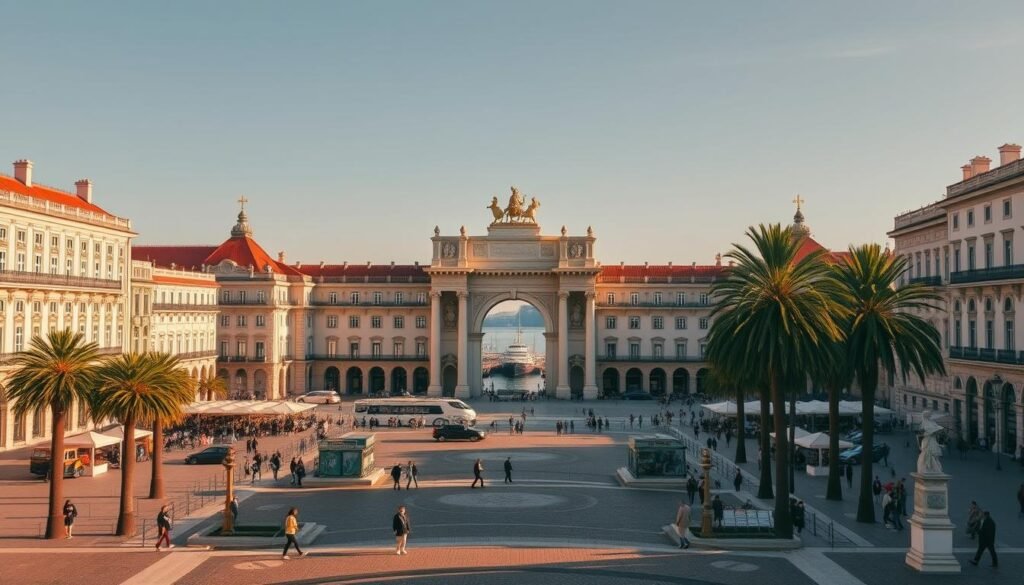
I begin my mornings by the river, where the scale of Praça do Comércio still makes me pause.
The vast square fronts the harbor and shows how 18th-century planning reshaped the city after the 1755 quake.You can learn best-time-to-visit-belize
Rows of earthquake-resistant buildings and a clear grid of streets give the area a calm, ordered feel.
I step under the arcades to peek at Martinho da Arcada, a café born in the late 18th century, and imagine merchants trading along the quay.
Then I climb the Rua Augusta Arch for a quick panorama and useful bearings before I wander deeper into Baixa.
- I use this place as a launchpad: trams to Belém depart nearby and ferry terminals are within walking distance.
- I plan early photos facing the water, before crowds gather, then move along the straight streets for an easy intro to downtown.
For more on the arch itself, I check this guide on the Rua Augusta Arch, which helps me time visits and skip the queues.
Belém at its best: Torre de Belém, Jerónimos Monastery, and Pastéis de Belém
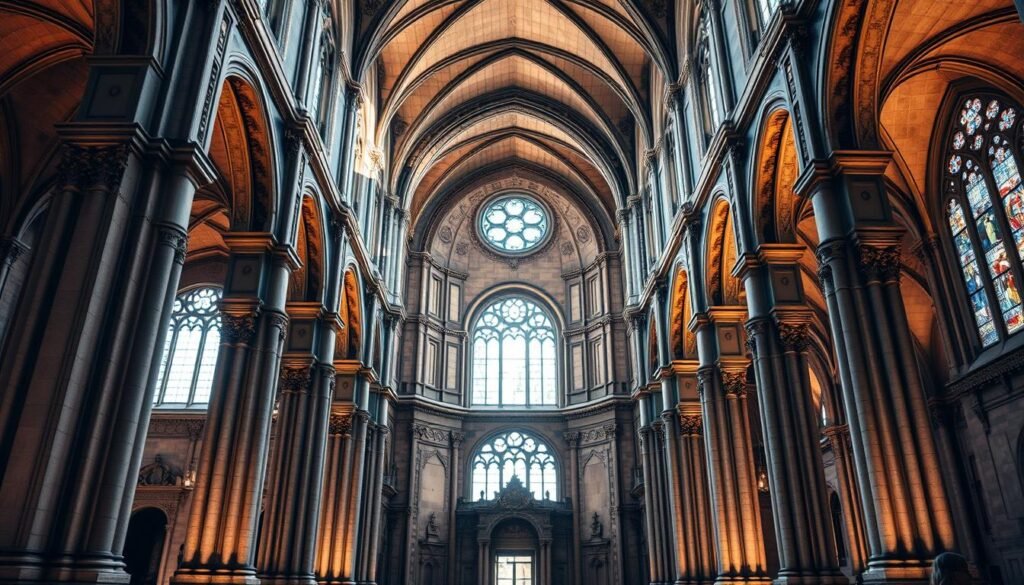
A short walk along the Tagus brings me from fortress walls to serene cloisters and, finally, a warm tart. This compact loop feels calm and full of character. I plan it as a focused outing that mixes architecture, maritime history, and a very good cafe stop.You can learn things-to-do-in-charleston-sc
Torre de Belém and the Age of Discoveries vibes
I start at torre belém, the early 1500s fortress that guarded the harbor and symbolized the Age of Discoveries. Its stone silhouette still reads like a seafaring emblem, and it once served as a prison.
Jerónimos Monastery cloisters and Vasco da Gama’s tomb
The jerónimos monastery cloisters slow me down. Intricate Manueline carvings and a tranquil courtyard make a good pause. I always spare a quiet moment at Vasco da Gama’s tomb inside the monastery.
Lines build fast because capacity is limited. I arrive early or book ahead when I can; that patience keeps the visit peaceful.
Monument to the Discoveries and a golden-hour stroll
A short stop at the Monument to the Discoveries completes the loop. I linger by the river at golden hour when light softens the stone and photos pop. This place is perfect for a slow, reflective walk along the quay.
My pastry ritual at Pastéis de Belém
For dessert I head to pastéis belém. The original custard tarts are the draw, and I often choose a café table, which moves faster than the takeaway line. If crowds spike, I admire exteriors, snap details, and loop back later to enjoy the pastry at ease.You can learn hings-to-do-in-san-diego
- Quick plan: start at torre belém, walk to the jerónimos monastery, add the monument, then finish with pastéis belém.
- Tip: arrive early, book when possible, and let the river pace your visit.
Architectural curveball: MAAT’s rooftop at sunset
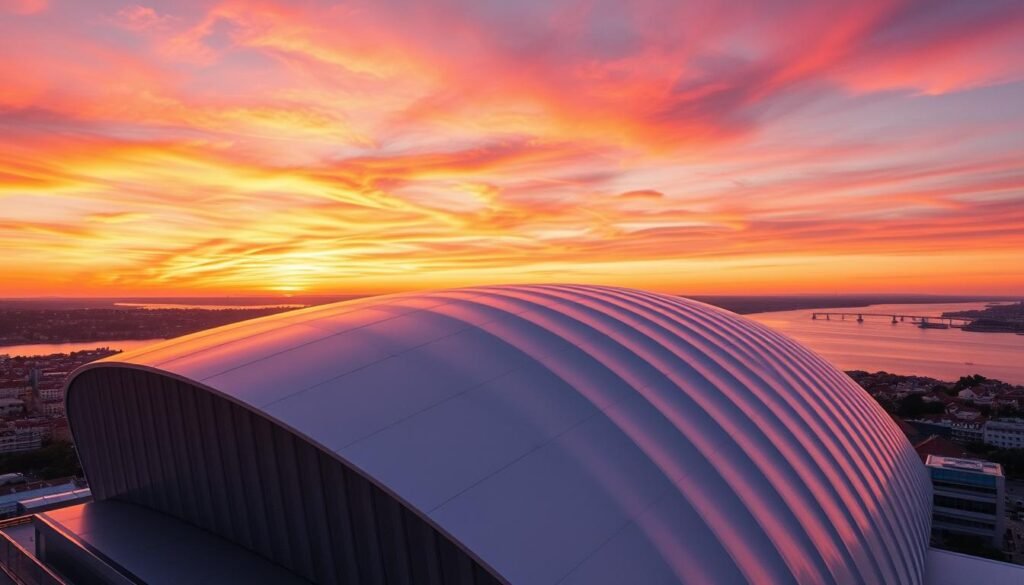
For a curveball of contemporary design, I time a visit to MAAT as the light softens. The museum opened in 2016 and its wavy riverfront building feels like a modern amphitheater that steps out over the water.
I can walk the rooftop for free without a ticket. That makes it an easy add-on when I’m finishing a Belém loop.You can learn more things-to-do-in-nyc
The gentle slope is one of my favorite urban views. The 25 de Abril Bridge frames the skyline, and the scene looks cinematic at golden hour.
I usually plan 20–30 minutes here. It gives enough time for photos and a quick pause while still leaving room for dinner nearby.
Why I like this spot:
- Modern contrast next to centuries-old monuments; a 21st century twist on the riverfront.
- Free public terrace that doubles as a viewpoint.
- Short, photogenic stop that balances museum-heavy days in the city.
| Feature | What I get | Best timing |
|---|---|---|
| Rooftop access | Free public terrace over the Tagus | Sunset (20–30 min) |
| Architecture | Wavy riverfront form, modern contrast | Late afternoon |
| Photo framing | 25 de Abril Bridge and open sky | Golden hour |
Creative Lisbon: LX Factory and the Insta-famous Ler Devagar
A former factory hub now hums with cafes, murals, and small shops beneath the bridge. I head here as a welcome break after a morning at monuments; the mood is relaxed and slightly rebellious.
LX Factory eats, shops, and street art under the 25 de Abril Bridge
LX Factory is a reimagined 19th-century industrial complex. It hosts independent restaurants, bars, coworking spots, and lively street art between old warehouse buildings.
I usually combine this district with Belém since the tram route makes the connection easy. I wander the narrow streets for lunch deals, murals, and small galleries. It’s a casual place where local and visitor energy meet.
Ler Devagar: multi-level bookstore, art, vinyl, and coffee
Ler Devagar is my must-stop. The multi-floor stacks, art installations, and a café invite me to linger with a book or browse vinyl and magazines.You can learn more things-to-do-in-portland-oregon
I plan photos early if I want the iconic interior shots, then browse records before a snack. This spot is a perfect reset after packed sightseeing—an easy place to graze, shop small, and pick up gifts in one central place.
| Spot | What I find | Best time |
|---|---|---|
| LX Factory | Restaurants, street art, shops, coworking | Afternoon |
| Ler Devagar | Books, art installations, records, café | Morning or early afternoon |
| Photo corners | Colorful murals and warehouse interiors | Early light |
| Gift hunting | Independent design and vintage finds | All day |
Book lovers’ bliss: Livraria Bertrand and tiny literary gems
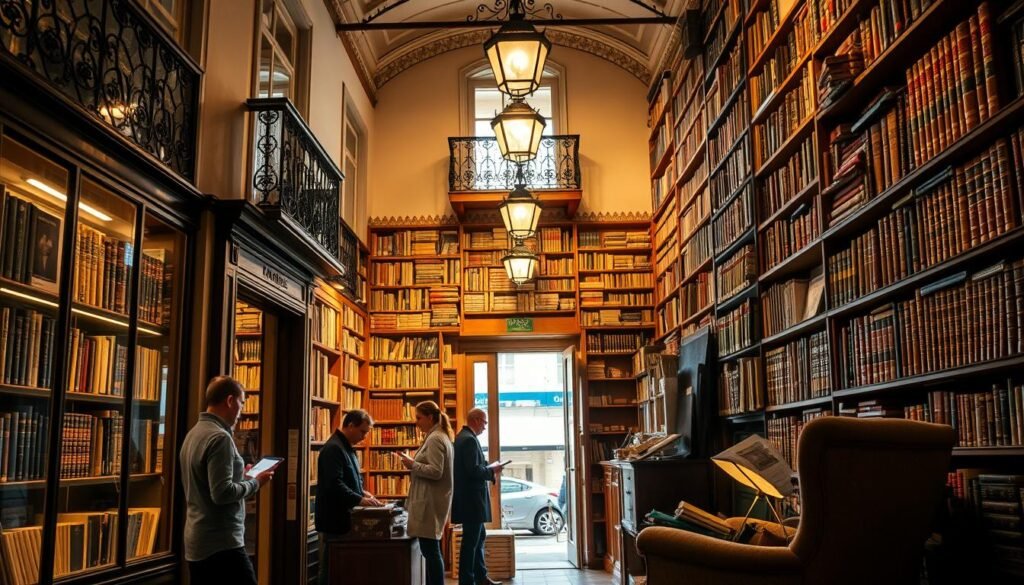
I slip into Chiado with a paperback and a curious grin, ready for quiet corners and stacks that whisper past lives. This short loop is my palate cleanser between loud streets and big sights.
Livraria Bertrand — a living page of history
Livraria Bertrand dates to 1732 and holds a rare claim as the world’s oldest operating bookstore. I always ask staff for the little stamp with the name when I buy something; it feels like a souvenir with a story.
The interior is more modern than ancient, but its centuries-long history is why the place matters. That mix of old roots and fresh displays makes visiting feel gentle and memorable.
Tiny shops that reward slow browsing
I detour to Livraria Simão — roughly four square meters and often one person at a time. It’s a quirky, one-at-a-time browse perfect for rare finds.
If I want a drink with pages, Menina e Moça is a cozy bookstore-bar hybrid where a glass pairs well with late reading. This small loop is my calmer hour in the city, a quiet place for discovery and simple pleasures.You can learn more things-to-do-in-kauai
Classic views: my favorite miradouros you’ll want to linger at
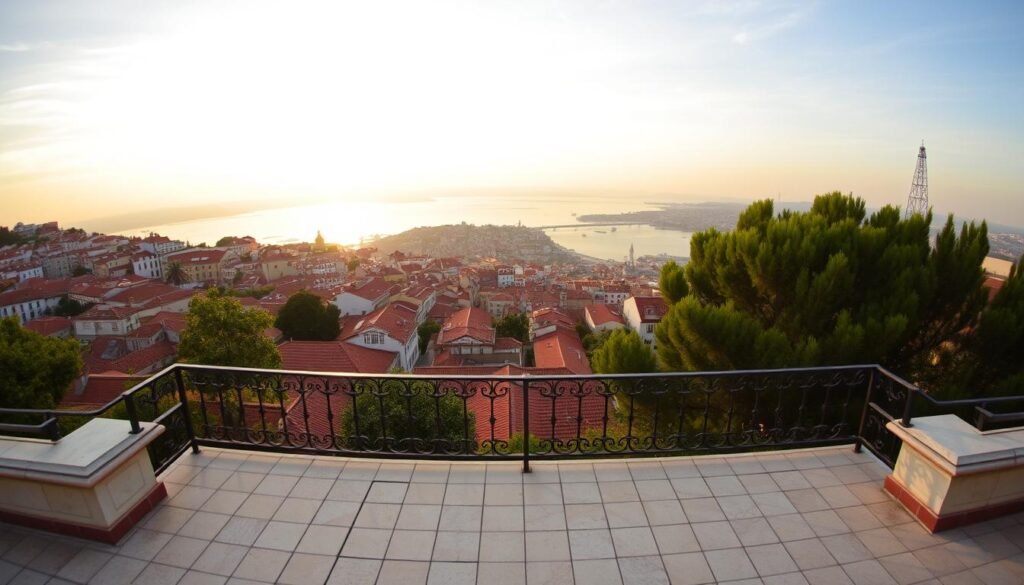
Morning light makes the best miradouros feel like private balconies above the tiles and river. I plan short climbs around these lookouts, which give a quick sense of the city and its rhythms.
Miradouro de Santa Luzia and Portas do Sol
I start early at miradouro santa for tiled arches, quiet benches, and bright river views. Then I swing a few steps over to Portas do Sol for an alternate angle over Alfama’s steep roofs and winding lanes.
Miradouro de São Pedro de Alcântara
Near bairro alto, São Pedro de Alcântara is my late-afternoon spot. The terrace frames golden light and makes a smooth transition to drinks and dinner nearby.
Graça and Senhora do Monte
For the widest panoramas I climb to Graça and Senhora do Monte. From these hill tops I can trace the Tagus, the bridge, and tiles across the skyline.
- My approach: treat miradouro-hopping as a mini tour and break museum-heavy days with fresh air.
- Timing tip: arrive early if you want space, or go at twilight if you enjoy the buzz.
Ride, glide, and climb: the fun ways I get around the hills
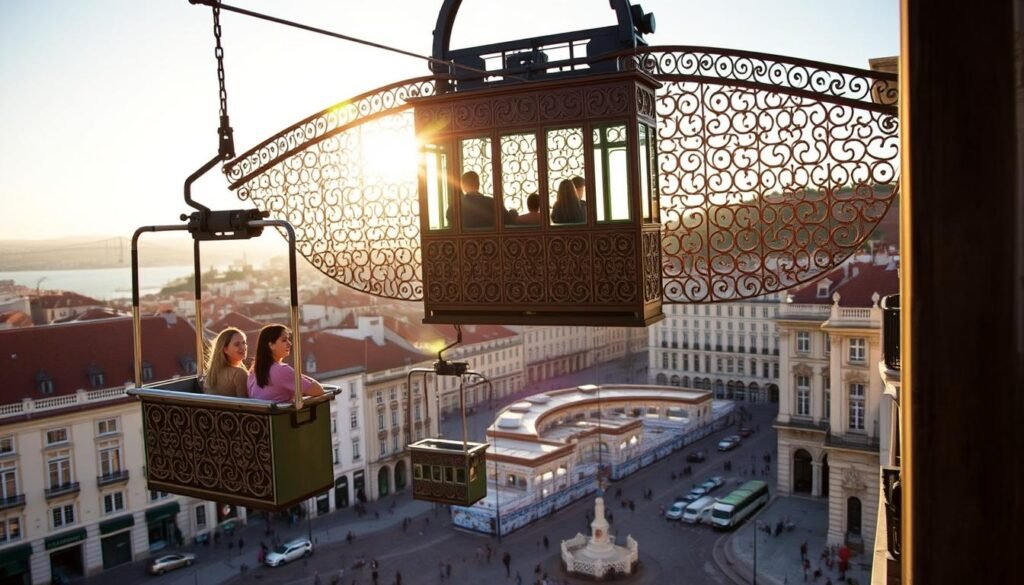
When the streets climb, I choose whether to glide up on a vintage vehicle or explore the lane by foot. I mix short rides with walking so I catch photos, cafés, and quiet corners without wearing out my legs.
Tram 28: ride or trace the route on foot
Tram 28 is iconic but crowded; I sometimes ride it for the feel and other times I trace the route on foot. Walking gives me freedom for stops and better photos when lines swell.You can learn more things-to-do-in-japan
Santa Justa Lift: ride versus the footbridge shortcut
I weigh the queue against a five-minute footbridge shortcut from Calçada do Sacramento. The santa justa costs €2.80 one-way (€5.30 return), and that cost is covered by my 24-hour ticket pass, so I often ride when my pass is active.
Funicular trio: Bica, Glória, and Lavra
Bica is my early-morning photo pick. Glória takes me up toward São Pedro de Alcântara late into the evening. Lavra feels quieter and more local. All three are included on the 24-hour pass, which is my simple way to save legs across this compact city.
Alfama wander: tiles, lanes, and São Jorge Castle
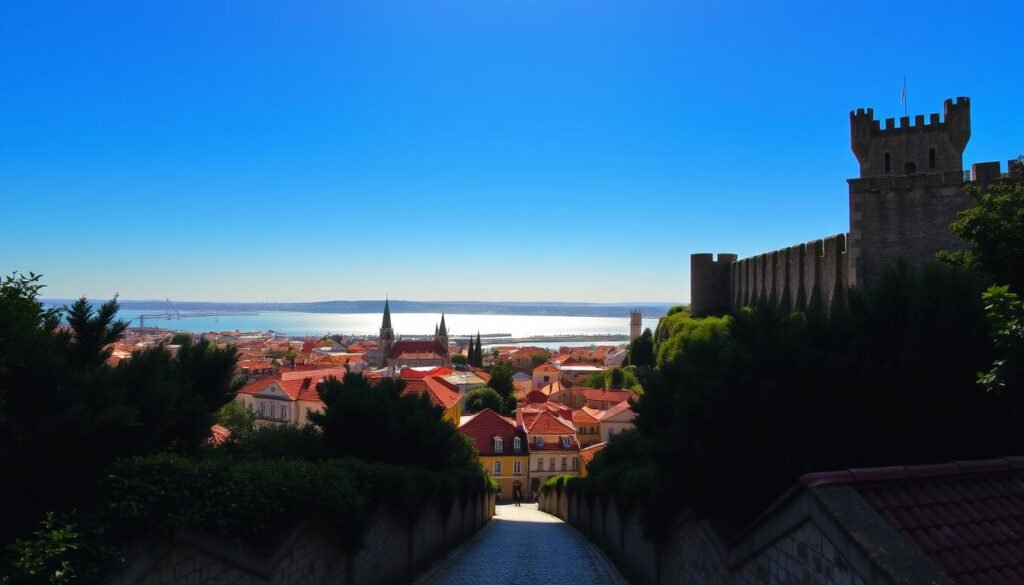
I let Alfama unfold at its own slow pace, wandering tile-lined lanes that reveal layered history around every corner.
I pause at the Sé Cathedral, an austere stop that feels part monastery, part city marker. Then I loop toward the National Pantheon and its calm dome.things-to-do-in-florence-italy
Slow strolls past key landmarks
I climb the narrow streets up the hill, watching laundry and azulejos frame quiet courtyards. I build a café break near a viewpoint, which gives my legs a rest and my camera a moment.
Castelo de São Jorge: planning like a local
For Castelo de São Jorge, I think early mornings or buy skip-the-line tickets during busy months. From the ramparts the panoramic views stretch across rooftops and the Tagus and remind me why this old district survived the 1755 quake.
| Spot | Why visit | Best time |
|---|---|---|
| Sé Cathedral | Romanesque heart and quiet cloister | Morning |
| National Pantheon | Impressive dome and calm interior | Late morning |
| Castelo de São Jorge | Historic fortress with sweeping views | Early or sunset (skip lines) |
Make it a waterfront day: Oceanarium and the cable car

I planned a half-day that pairs the massive aquarium with a breezy cable car ride. I dedicate a morning to the Oceanarium for a calm, immersive contrast with the busy city.
The Oceanarium’s central tank steals the show. Rays and sharks glide past as I circle galleries that recreate the Atlantic, Pacific, Indian, and Antarctic habitats. Penguin feedings are a highlight and often make me pause with a smile.
After the aquarium, I take the cable car for a short, scenic ride. The lift floats above the riverfront and gives new angles on the neighborhood and the modern building lines along the quay.
“Watching fish drift by the main tank felt like stepping into a different rhythm of the city.”
- I aim for morning entry to avoid crowds and catch penguin feeding times.
- If OCEANTAP15 is active at checkout, I use it for 15% off tickets and keep my day on budget.
- This loop is a relaxed, family-friendly pause among other busy stops.
Eat and drink like a local: cod, petiscos, and a glass of wine
I follow my nose through narrow alleys until the scent of grilled fish pulls me in. Night meals taught me how the city treats simple ingredients with care and heat.
Where I hunt down bacalhau, octopus, and fresh sardines
I plan food days around cod dishes like Bacalhau à Brás and pastéis de bacalhau. I order Polvo à lagareiro or garlicky octopus when the menu looks honest.
For wood-fired sardines I head for O Cartaxeiro. For homestyle fare, Tasca Estrela d’Ouro and Zé da Mouraria never miss.
Pastel de nata pilgrimages (beyond Belém)
I sample pastéis de nata at small bakeries across neighborhoods. Comparing blistered tops is my kind of homework.
Ginjinha: the tiny shot that warms up the night
A quick ginjinha at A Ginjinha (sometimes served in a chocolate cup) is my pre-dinner ritual. It’s sweet, sharp, and sociable.
Markets to taste it all: Time Out and Campo de Ourique
Time Out Market offers variety and buzz; Campo de Ourique is where locals eat for value and quality. I split visits so I get both atmosphere and affordable plates.
| Spot | Why I go | Best for |
|---|---|---|
| Time Out Market | Variety and lively scene | Sampling |
| Campo de Ourique | Local stalls, better prices | Everyday meals |
| Tasca spots | Homestyle seafood | Comfort food |
My tip: order petiscos and share with friends, pairing small plates with a regional wine for a true local meal.
Fado after dark: how I catch a soulful show
When darkness settles, I follow the narrow lanes until the first note tells me I’ve found the right room. Fado thrives in Alfama and Bairro Alto, and those neighborhoods hold the most intimate settings for this music.
Cozy, intimate rooms in Alfama and Bairro Alto
I prefer small venues where voices and guitars feel close. A Tasca do Chico in bairro alto is a classic spot; expect queues but great atmosphere.
Mesa de Frades runs shows Monday–Saturday. I book a dinner table when I want the full experience. If I’m after a shorter visit, I slip in late for a drink and a single set after 11:45 pm.
What I book ahead and what I queue for
Shows split into short sets with breaks. That rhythm makes booking options flexible.
- My pick: reserve a dinner-inclusive night for a full experience; it removes queuing stress.
- Queue strategy: arrive early for classic rooms like A Tasca do Chico if I’m unreserved.
- Once inside, I keep conversation low and listen—locals treat Fado with respect, and so do I.
- After the show, I wander nearby lanes for a quiet walk, letting the music linger as I wrap the day.
Cross the Tagus: ferry to Cacilhas for calm streets and seafood
A quick hop on the ferry from Cais do Sodré gave me calm views and a different city rhythm. The short ride swaps crowded squares for quieter lanes and a slower pace.
I confirmed my transport pass covered the ferries before boarding. That simple check made logistics easy and let me relax into a half-day break.
Along the waterfront classic seafood brasseries line the quay. I settled for grilled fish and a pot of seafood rice while the sun slid toward the horizon.
Up the main road, Retro Queen is a fun place for vintage finds. I often pop in for a quick browse, then loop back along the river with the skyline across the water.
This mini-escape feels like a reset between a busy morning and an evening back in town. It’s a small, friendly outing that many locals favor when they want fresh air and simple food.
| Feature | What I do | Best time |
|---|---|---|
| Ferry from Cais do Sodré | Short scenic ride across the Tagus | Late afternoon |
| Waterfront brasseries | Grilled fish and seafood rice | Sunset |
| Retro Queen | Vintage browsing up the main road | Afternoon |
Easy day trips from Lisbon: Sintra, Cascais, and Cabo da Roca
A short train ride from Rossio opens up mountain palaces, seaside lanes, and a dramatic cliff that feels like the edge of the world.
My approach for a smooth day trip is simple: catch the early train, beat the crowds, and save extra time for terraces and coastal paths.
Sintra strategy: Pena Palace first, then Moorish Castle
I take the Rossio train (about 40 minutes) and taxi up the hill to Pena Palace first. That spot draws the largest crowds, so arriving early means better light and calmer terraces.
I always pre-book timed tickets for Pena when I can. From the palace I work down toward the Moorish Castle, walking past forested slopes and ancient walls, enjoying wide, pine-framed views.
Cascais strolls and coastal views toward Boca do Inferno
For a seaside counterpoint, I head out on a separate day or combine both stops. Cascais is an easy ride and perfect for a gentle walk along the promenade.
I linger at the cliffs near Boca do Inferno, where waves pound the rock. The coastal town has cafes and a relaxed vibe that feels well worth a slower pace.
Cabo da Roca: quick stop at Europe’s western edge
Cabo da Roca is a short detour from Cascais and a must for the dramatic cliffline. Standing at the westernmost edge feels cinematic and, in my view, well worth the visit for rugged, open-air panoramas.
- I catch the Rossio train early and taxi up the hill to Pena Palace first to beat crowds.
- I pre-book tickets for timed entry at Pena to keep my schedule tight and maximize views.
- From there I walk or shuttle down to the Moorish Castle for ancient walls and forested panoramas.
- On another outing, I ride to Cascais for seaside paths and the dramatic crash at Boca do Inferno.
- I add a quick stop at Cabo da Roca for the western edge — short but well worth the detour.
| Stop | Why go | Best timing |
|---|---|---|
| Sintra (Pena & Moorish) | Romantic palaces, medieval walls, high hill views | Morning (pre-book ticket) |
| Cascais | Seaside promenades, coastal cafes, Boca do Inferno | Afternoon |
| Cabo da Roca | Westernmost point, rugged cliffs, sweeping views | Late afternoon for light |
These top short escapes make a single trip lisbon feel more layered. Pick one or combine two for a compact, high-return day trip that mixes history, landscape, and fresh air.
Conclusion
Here’s the compact approach I took when I had only a few days and wanted real memories.
I recommend a three-day rhythm: group neighborhoods by day, save golden hour for miradouros, and leave slots for food and music. This guide kept my plans flexible and joyful.
Spring or early fall gave me quieter streets and kinder weather. A 24-hour transport pass covered trams, funiculars, the Santa Justa Lift, and optional ferries, which made navigating the city effortless and saved precious time.
With limited hours I still hit Belém monuments, Alfama lanes, LX Factory, the Oceanarium, and a day trip to Sintra or Cascais. The simple way I traveled mixed must-see highlights with easy detours.
Take this as a small checklist of useful things to pace your trip so each place feels earned, not rushed.


